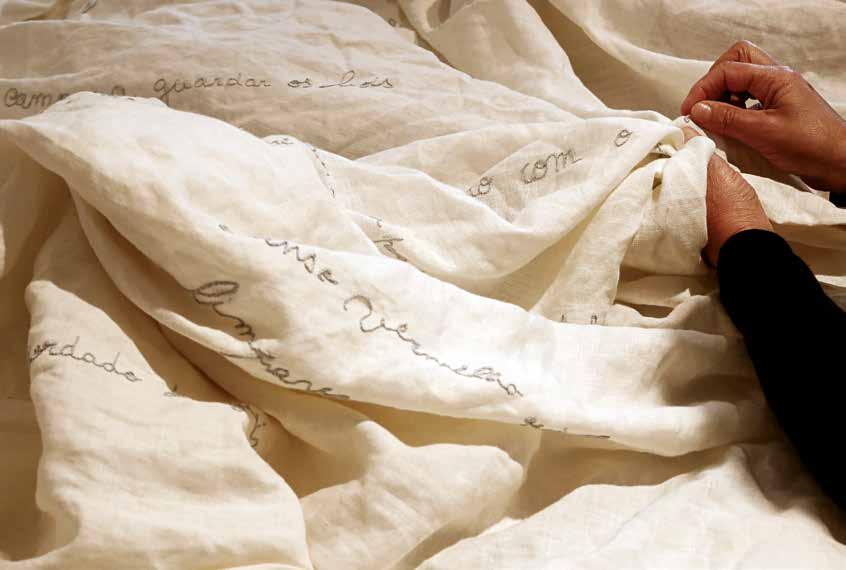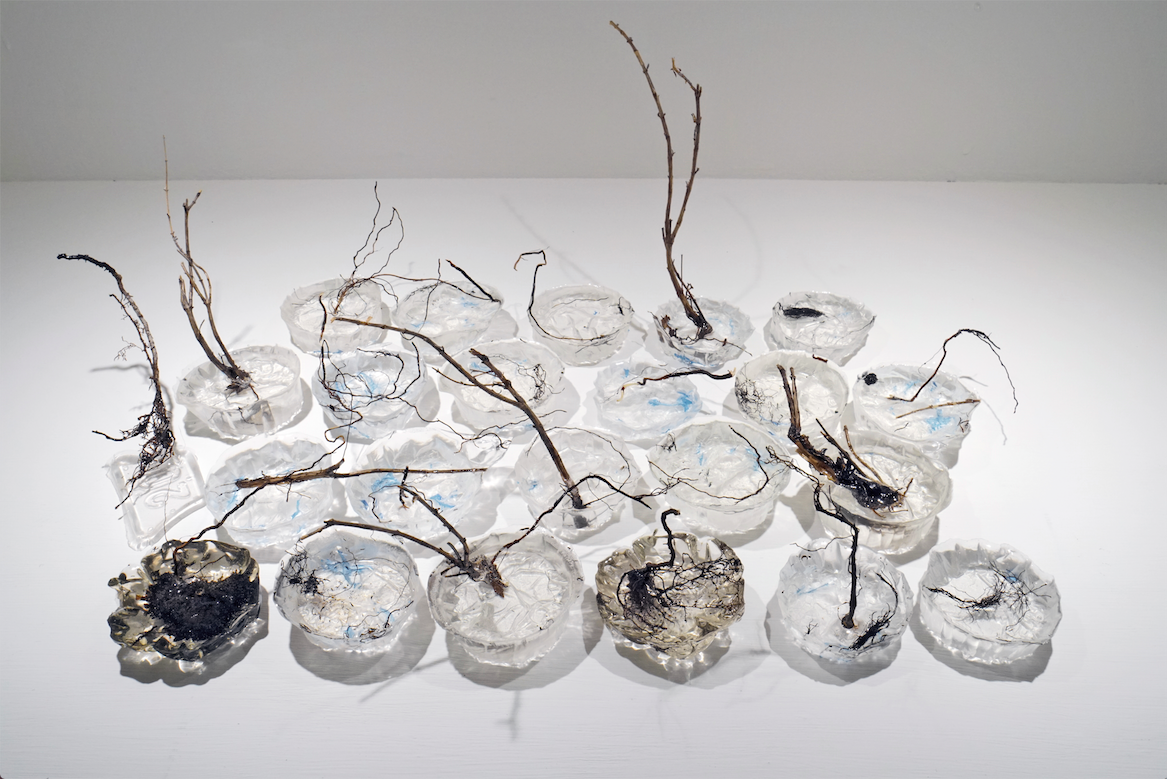GIULIA PARDINI
Magic Carpets partner Ideias Emergentes’ suggested theme for your residence was memory in textile. How did you approach this?
VIRGINIA ZANETTI
I considered the theme of memory from both a recent and historical perspective, generally. When I approach a new project, I try to stay open and listen, collecting lots of inspiration and information from people and places. I researched local history by visiting places of artistic and cultural value, and I tried to capture images of the collective subconscious. Both methodologies led me to choose materials and techniques already shared by the community. To create the work, I chose to use natural linen, combined with traditional Guimarães hand embroidery. The former was cultivated in the past by families and then became an industrial and exported product, and the second is the pride of local craftsmanship. I decided to embroider textile memories into fabric in the form of text, creating a short circuit with the etymology of the word text. Then I tried to give shape to the most storied iconographic vision of the country: the caravel, a strong symbol for the birth of Portugal as a nation in collective memory. In my project, this ship, invented to sail even in unkind winds and a metaphor for exploration and overcoming limits and crises, became an expedient to creating multi-level collective action.
GP
You live in Prato, famously linked to the textile sector: Guimarães, the city that hosted you for this residence, has a long history in the textile sector. Did you find a link and some correspondence between the two cities?
VZ
I found many similarities with Prato: both cities were founded near a river, in a rural area, where the economy has changed from family-level to mechanical industrial production. They were both hit by the 2008 crisis, which led to the closure of several businesses, leaving Chinese companies responsible for businesses they speculated on. Other companies have reinvented themselves by moving toward computerization and innovation. Capitalism and, before, colonialism, with their exploitation of human and environmental resources, are the effects of human greed, and inevitably lead to a state of cri- sis that must be overcome in order to reimagine what is real.
GP
Your residence project involved a performance featuring elderly people from two nursing homes in Santa Casa da Misericordia, some of whom had worked in fabric factories in the past. What can you tell us about the performance?
VZ
The project included several workshops and performances, culminating in a final action: supporting two sails in the wind at the highest point where you can see the city and the horizon and imagine the sea. I started in the two nursing homes, where I chose a room to weave a personal dialogue, where each person wrote a memory in one sentence. Then I found a public space where I spent ten days in a row embroidering the sentences on two sails with other women: on one sail, we placed the question that became the title of the project, on the other, we transcribed the memories, maintaining the same handwriting for each one. The final part was to build and support the sails in the wind. The initial idea was to bring elderly people out of the nursing home, together with others, to take a little trip, but I had to alter the project to protect them from the wind and cold. So, there were two parts: one in the garden of the nursing home and one on top of Pehna Mountain. There, the cold and wind were very harsh and the performance because a real act of resistance and challenge to the storm. The first sail had Para onde estamos indo?, embroidered in blue and various symbols of natural elements, followed by the second sail, with the community’s memories embroidered in grey.
GP
You’ve had the opportunity to work with elderly people, especially those affected by Alzheimer’s, in the past. I’m thinking of your project, “Muri”, at the Palazzo Strozzi Foundation in Florence in 2017. What role does memory play in your work?
VZ
Memory is a key aspect to understanding human beings. I’m interested in investigating collective and personal memory. By caring for and being conscious of memory, we can live better in the present and imagine our future. There is definitely a strong autobiographical component in the work I did with the Alzheimer’s patients for Palazzo Strozzi, and in the project Save Delete, which examined the phenomenon of the removal and deletion of memory, done with a group of minorities.
GP
Will the research you started in Guimarães have any further development, in Italy for example?
VZ
The project I’ve started will definitely be developed further. Each one of my projects comes out of the previous ones. Considering that I am in Italy now and that a month is a very short time to complete research, the project will continue to take form here.
Giulia Pardini is Magic Carpets‘ Emerging Curator on behalf of Latitudo s.r.l.









